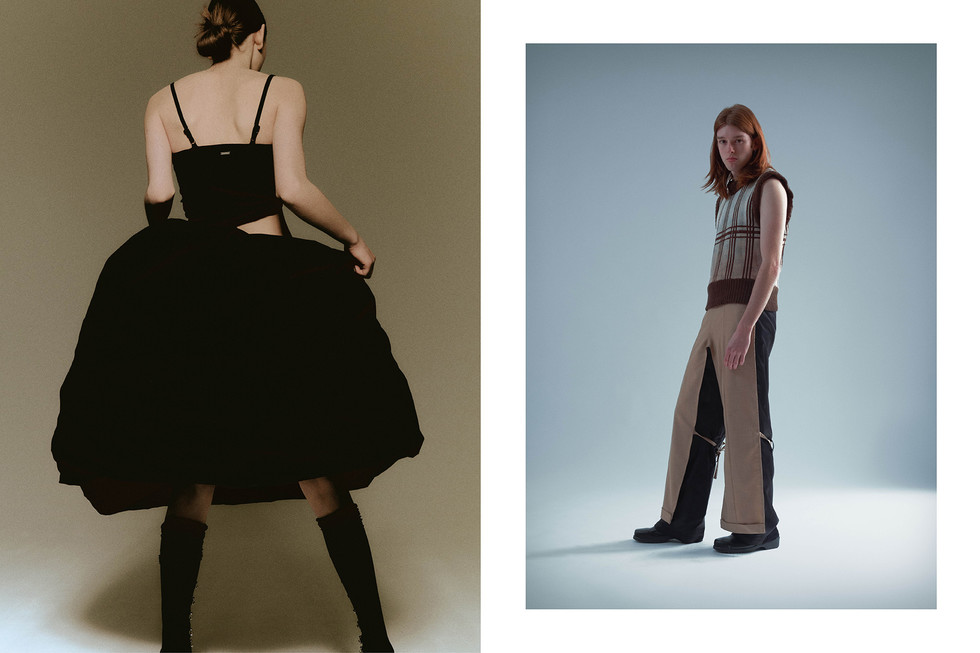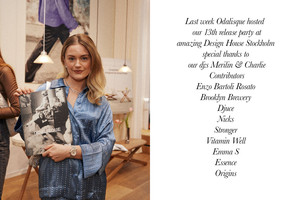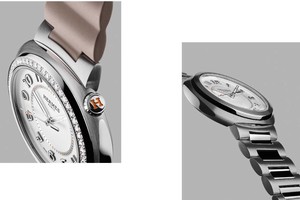Winners of the Nk Young Talent Award by Beckmans - Joel Andersson and Filippa Fuxe
Written by Fashion TalesFor the fourth year in a row, the NK Young Talent Award by Beckmans was presented. New this year was that the prize was awarded in both the women's and men's fashion categories, and NK had initiated a close collaboration with ASFB - Association of Swedish Fashion Brands and Stockholm Fashion Week. This year's winners were the newly graduated fashion designer Joel Andersson with his collection 'Ambivalent' and fashion designer Filippa Fuxe with her collection 'Re:incarnation'. The award ceremony took place on February 20th at Nordiska Kompaniet in Stockholm. The winners were honored with an exhibition at NK Stockholm Ljusgården and a shop window display which you can still admire until March 3rd, in addition to being visible in NK's digital channels.
Since 2021, NK has been presenting the prestigious NK Young Talent Award by Beckmans in collaboration with Beckmans College of Design, where most of Sweden's most renowned designers have studied. The purpose of the award is to promote and celebrate the young design stars of tomorrow, who are ready and eager to enter the workforce after their education. NK has initiated a collaboration with ASFB - Association of Swedish Fashion Brands, which is the industry association for Swedish fashion with a mission to promote positive development of Swedish fashion both within Sweden and internationally. This year's winners in 2024 are Joel Andersson and Filippa Fuxe.
Joel Andersson
Joel Andersson was rewarded for his graduation collection 'Ambivalent', which explored ambivalence towards fashion and its role in his life. 'Ambivalent' was a reflection of his personal journey from the countryside to the fashion world by combining influences from his past with his current love for fashion. Joel created a unique collection that reflected a true representation of himself. Rooted in the inner conflict between the need for new fashion and awareness of the environmental impact of overconsumption, Joel explored ambivalence through the method of deconstruction. The method started from existing garments and minimized the waste of newly produced textiles. Joel's upbringing on a farm with parents who ran a carpentry business meant that he was constantly surrounded by practical workwear, which influenced his passion for workwear and his current relationship with clothing and fashion creation.
Deconstruction as a method was one of the reasons I became interested in fashion. There was of course a certain interest in fashion before that, but perhaps it was at a more basic level that all young people are interested in fashion. Through music I listened to, I picked up references to different fashion designers that I had never heard of such as Martin Margiela, Helmut Lang, and Raf Simons. My curiosity grew, and through the internet, I came across the anti-fashion movement and eventually the concept of “deconstruction”, so the method felt very suitable for my graduation project, said Joel Andersson.
Filippa Fuxe
Filippa Fuxe received the award for her graduation collection 'Re:incarnation', which was based on a depiction of a recycled and biodegradable material's own journey through time and between bodies. The collection highlighted sculptural forms, femininity, and originality as well as how the material could portray life history and background. With 'Re:incarnation', Filippa wanted to tell the story of the material's rebirth and its transformation into new, meaningful garments. She depicted the life of the material in the collection, inspired by works of spiritual artists such as Agnes Pelton and Emma Kunz. Another important part of the collection was shoes that were 3D-sketched and then produced in wood with soles made of reused tires. The sculptural silhouettes were inspired by Isamu Noguchi, a Japanese-American modern artist who worked in California in the 20th century.
I developed the collection by using recycled materials that had been broken down from old clothes to pure cellulose, compressed into sheets, spun into thread, and then woven into new fabrics that I used to create new garments. The material thus had its own life, it died and was reborn, and its soul was transferred from one garment to another. The collection carried memories, stories, and experiences to tell about the life it once was a part of, said Filippa Fuxe.
Images courtesy of Filippa Fuxe and Joel Andersson













